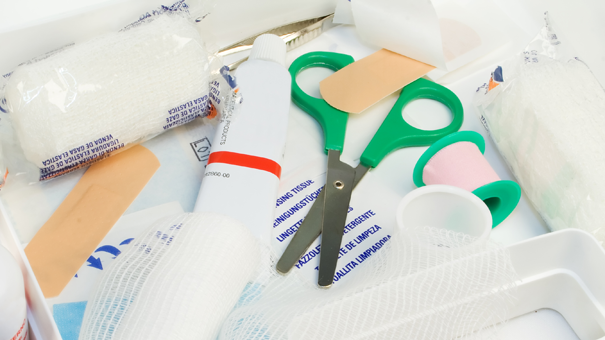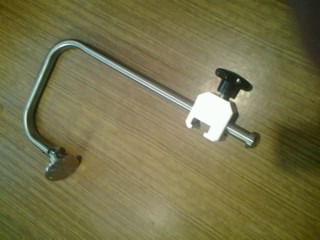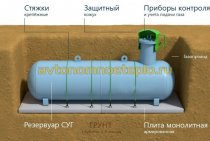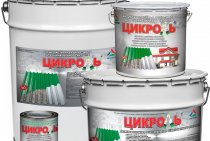Seasonal Pharmacy
All this is not trifles at all. Imagine, for example, that we are talking about a preparation for the manufacture of eye drops, which is very sensitive even to a short-term change in temperature conditions and quickly loses its original therapeutic activity.
Industry professionals often complain that pharmacists and pharmacists have almost ceased to consult, turning into automatic drug sellers. But informing customers about the storage and transportation of medicines to the home (office) is one of the areas in which you can show your consulting skills.
According to Elena Nevolina
, such information should be mandatory for all thermolabile drugs, especially in the summer. "Otherwise, in the case of relatively long transportation (or storage) of the drug at a temperature higher than prescribed by the instructions, its effectiveness may decrease, and the responsibility for this - if the buyer was not informed by the original seller - will be borne by the final seller," - concludes Elena Nevolina
.
The season gives additional nuances to both consumer behavior and pharmacy consulting. Going on a summer vacation or to the country, people stock up on tourist or country first-aid kits, sometimes forgetting about the need to store each of the purchased medicines within the temperature indicated in the instructions, in a place protected from the sun, etc. And then they are surprised that the medicine did not work , sinning often with suspicions of a pharmacy or a doctor.
If a person is dependent on medicines and at the same time travels often - it does not matter whether it is to distant cities and countries or from a city apartment to a country house - then he may be recommended to purchase a small thermal container in a pharmacy (for example, with external dimensions from 25 cm to 30 cm). The duration of the cold exposure of such containers depends not only on the mode of storage of medicines, but also on the ambient temperature.
Depending on this, it varies from 34–40 hours to 4 days, which is very convenient, especially when traveling and other movements in areas that are not the most developed by civilization.
The duration of the cold exposure of such containers depends not only on the mode of storage of medicines, but also on the ambient temperature. Depending on this, it varies from 34-40 hours to 4 days, which is very convenient, especially when traveling and other movements in areas that are not the most developed by civilization.
A separate issue is the car first aid kit. In a car, it is simply impossible to ensure the proper storage of medicines in the warm season. That is why the decision made a few years ago to remove all medicines from the mandatory car first-aid kit, leaving only dressings, adhesive plasters, scissors and a cardiopulmonary resuscitation device in it, looks reasonable.
Now each driver, based on their own "case histories" and considerations, decides for himself what to include in an individual travel kit of medicines. And the first-timer who dispenses medicines to him should be warned about the temperature limits at which one or another drug can be stored, as well as the need not to leave the first-aid kit under the sun.
RECOMMENDATIONS ON THE CHOICE OF INSULATION
Since the shoes will be different keep your heat depending on how much heat your body emits, and to formulate recommendations for the purchase, is precisely based on the degree of the alleged activity of a person on the street in winter.
high activity
If the use of clothing or shoes will have you at temperatures down to 10-15 degrees Celsius, then the purchase of clothing can restrict the density of insulation to 100 grams. For shoes – very comfortable will be the sealer of 200 gram.
At temperatures as low as 20-30 degrees Celsius, the clothes is better to choose insulation with a density of 150-200 grams, with insulation of up to 400 grams. You can, of course, to buy shoes and thicker insulation, but the high probability that, at high motor activity in shoes will be just hot. If you just want to have a "heat reserve" just in case, then it is better to buy shoes albeit with tighter insulation, but not necessarily with the use of membrane fabrics, able to remove excessive heat.
The average activity
To -15 is fine with 150-200 gram insulation, perhaps even enough and the range of 100-150 grams, but will depend on other clothing under the jacket. Shoes should be selected in the density range of insulation - 200-400 grams.
-15 degrees and below for the upper clothing will be appropriate insulation 200 grams. If the activity is not a sport and not a fundamental size outerwear, in this case, perhaps even more warm clothing would be a jacket.As for shoes, you should select models with insulation density above 400 grams, but probably not more than 1000 grams, vol.K. otherwise feet will just sweat.
Low activity
To temperatures 5 to 10 degrees may be sufficient clothing with insulation 200 grams. At lower temperatures it is better to buy clothes with natural insulation (fluff or a mixture of fluff/feather).
As for shoes, then to -10-15 degrees is fine , or boots with insulation of density 600-1000 grams, at lower temperatures it is already possible to choose the model with the density of the insulation 1000+ grams.
Thermal mattress MCI 2N
|
|
Price: 72500 r. Options: Autoclavable mattress cover, Universal bracket for fixing the control unit to the round post The outer shell is made of silicone-containing moisture-proof and dirt-repellent wear-resistant fabric, can be equipped with a protective cover made of autoclavable material; This thermomattress model can be equipped with a universal bracket for fixing the control unit to the Euro-rail of the operating table. Medical electric mattress "Thermoelite", model MCI 2N
|
Thermolabile reagents
Above were considered examples of the influence of temperature storage conditions on the physical properties of reagents associated with the transition of a substance from one state of aggregation to another. However, as already mentioned, some thermosensitive reagents under these conditions undergo more significant changes associated with the chemical transformations of the substance. Substances that can change their chemical properties under the action of heat or cold are called thermolabile.
If a change in physical properties, for example, the transition of a liquid reagent to a solid state and vice versa, can always be detected during an external examination of the reagent, then a change in chemical properties in most cases does not affect the appearance of the product. This "insidious" property of thermolabile reagents should always be kept in mind, as it can lead to unpleasant consequences when using them. The use of a spoiled thermolabile reagent can lead to distortion of the experimental results.
The thermolability of chemical reagents can manifest itself both under the influence of heat and under the influence of cold. As already mentioned, formalin partially polymerizes at temperatures below 9°C, forming a white precipitate of paraform, which does not go into solution when heated; metallic tin, which exists at room temperature in the p-modification (“white” tin), at low temperatures, especially quickly at -30 ° C, passes into the a-modification (“gray” tin), while crumbling into a fine gray powder. However, the thermal lability of chemical reagents under the influence of cold is a relatively rare phenomenon, it manifests itself most widely with an increase in temperature.
Thermal lability of inorganic reagents manifests itself mainly in two directions. Many crystalline hydrates completely or partially lose water of crystallization when the temperature rises.
For example, cadmium chloride CdCl2-2.5H20 at 34 ° C loses 1.5H20,
calcium chloride CaC12-6H20 at 30 ° C - 4H20,
cobalt nitrate Co (N03) 2-6H20 at 55 ° C - ZN20,
sodium carbonate crystalline Na2C03-10H20 quickly erodes in air.
Some inorganic reagents decompose with increasing temperature, for example,
ammonium carbonate at 58 °C,
ammonium carbonate sour at 36-60 degrees,
barium sulphide acid at 50°C,
iron (III) nitrate at temperatures above 50 ° C,
iron(III) thiocyanate at temperatures above 45 °C,
sodium carbonate sour (about 50 ° C),
tellurous acid at 40°C;
copper (II) hydroxide is gradually dehydrated, and above 54 ° C does not exist;
sodium bismuth acid under the action of heat slowly decomposes, releasing oxygen;
crystalline iron bromide is stable only in the range from -29.3 to 49 ° C;
copper selenite decomposes when heated, releasing Se02, etc.
Thermolabile organic reagents can also be conventionally divided into two groups. One group consists of unsaturated organic compounds and compounds with reactive functional groups, in which the ability to chemical transformations and, first of all, to polymerization and polycondensation reactions increases sharply with increasing temperature. These include, in particular, cis-aconitic acid and its anhydride; acrolein, p-amiopropionitrile, arginine succinic acid; salts of acetyl phosphate and carbamyl phosphate; 1,4-divnylbenzene; arachidonic, linoleic, linolenic, oleic acids and nx esters; acetoin, benzophenone, pyruvic and oxaloacetic acids; cinnamon, iso-butyric, propionic aldehydes; 4-pitrophenyl esters of acetic and phosphoric acids.
The second group includes natural or structurally close chemical compounds, such as albumins, globulins, histones and other proteins; enzymes and coenzymes; nucleosides, nucleotides, nucleic acids; peptides and polypeptides; sugar phosphates and some other sugar derivatives; hormones, steroids, antibiotics
The chemical reagents of this large group, numbering hundreds of names, are very thermolabile; these reagents are stored under special conditions with great care
Temperature and law - rules for storing thermolabile drugs in a pharmacy
Now - to the legal side of the issue. First of all, we note that Article 10 of the Law "On Protection of Consumer Rights" (No. 2300-1 of February 7, 1992) obliges the seller to provide buyers with the necessary and reliable information about the main consumer properties of goods. Storage conditions are one of them.
Violation of this article entails a warning or the imposition of an administrative fine: on officials - in the amount of 500 to 1,000 rubles, on legal entities - from 5,000 to 10,000 rubles. (Clause 1, Article 14.8 of the Code of Administrative Offenses).
According to subparagraph "h" of paragraph 5 and paragraph 6 of the "Regulations on the licensing of pharmaceutical activities" (Decree of the Government of the Russian Federation of December 22, 2011 No. 1081), non-compliance with the rules for storing medicines is qualified as a gross violation of licensing requirements
. To date, this entails the following administrative penalties:
- for individual entrepreneurs (IP) - fine from 4 thousand to 8 thousand rubles. or administrative suspension of activities
(ADD) for up to 90 days
- for legal entities - a fine in the amount of 100 thousand to 200 thousand rubles. or APD for up to 90 days
- for officials - a fine in the amount of 5 thousand to 10 thousand rubles.
However, this is "for now". , a draft law has been submitted to the State Duma, which significantly increases the amount of fines for this type of violation. If it is adopted, it will enter into force on January 1, 2017. From that day on, violation of the drug storage regime - as a gross violation of licensing requirements - will entail:
- for individual entrepreneurs and legal entities - a fine in the amount of 200 thousand to 300 thousand rubles. or APD for up to 90 days
- for officials - a fine in the amount of 25 thousand to 35 thousand rubles.
The rules for the storage of medicines are approved by order of the Ministry of Health and Social Development of August 23, 2010 No. 706n. The requirements for the temperature regime are prescribed in paragraphs 3, 27, 32, 33 and 49 of the Order. We also add that in the recently adopted Professional Standard "Pharmacist"
(Order of the Ministry of Labor and Social Protection of the Russian Federation dated March 9, 2016 No. 91n) the list of labor actions of a pharmacist also includes the provision of advice on the rules for storing medicines at home
.
So, we can conclude that the summer season makes adjustments to the work of the first-timer, obliging him to be more attentive to the topic of advising customers on the transportation and storage of purchased drugs, taking into account the established air temperature. Consumers are generally grateful for such information. Plus they see it as part of the service. This increases their loyalty to this pharmacy, the idea of the professionalism and helpfulness of its employees. Which in turn increases sales.
To the house with a chill - how to transport thermolabile drugs
Also it is necessary that the first-timers advise consumers on the transportation and storage of medicines they purchase
. This consumer side of the issue is often forgotten. This happens because it is not customary for us to include the consumer in the chain of ensuring the drug storage regime - he, they say, is not a member of the industry.
But what is the use of strict compliance with the prescribed storage conditions by the manufacturer, distributor and pharmacy, if the buyer of a heat-labile drug, having purchased it in the early morning of a hot summer day on the way to work, then carries the medicine with him all day in an overheated backpack or bag, and, having come home, does not put it in a separate compartment of the refrigerator. And since the pharmacy is exactly the place where the pharmaceutical industry (represented by the first-timer) meets with the consumer of its products, then pharmacy advice on storage and transportation of thermolabile drugs
, especially in the summer, is an
, in fact, part of the cold chain process
.
Let's consider the situation with an example. In July, a small experiment was conducted in three randomly selected pharmacies in the Moscow districts - Krylatskoye, Kuntsevo and Mitino. On the day when the temperature in the capital was approaching the 30-degree mark, consumer N, a participant in the experiment, made a visit to each of them in turn to purchase a heat-labile drug X (storage mode not higher than 8 °C, in a place protected from light). The geography of these pharmacies was chosen in such a way that it would take him at least an hour to get home by public transport.
The first visit can be called failed. N refused to buy, because the temperature in the pharmacy hall seemed to him above the permissible. Of course, this was just a subjective assessment, and not the result of measurement. But the consumer, unlike official inspectors, has the right to be guided by feelings, sympathies, and first impressions.
In the second pharmacy, the climate turned out to be “just right”. Here, the consumer was simply released X (brought it from the refrigerator), without being reminded of the thermolability of the drug and its storage regime, without offering to provide transportation conditions.
Finally, in the third pharmacy, the pharmacist, having brought the required medicine from the pharmacy refrigerator, informed the buyer about the procedure for storing the thermolabile drug and offered to also purchase a hypothermic package (price slightly more than 10 rubles). She asked if N wanted to activate the package.
He replied that he did not know if it was necessary and that he would have to drive home for more than an hour. After learning about the duration of the trip, the pharmacist considered it necessary to offer to activate the hypothermia package, did so and attached it to the package. As a result, the medicine reached the house in the prescribed temperature conditions.
So, three pharmacies (of three different organizations) - three different approaches
The point, it seems, is how much attention the management of a particular company pays to this issue. Samson Sogoyan
emphasizes that when dispensing heat-labile drugs, as well as during the period when the outdoor air temperature exceeds 25 ° C, first-timers should draw the attention of buyers to the need to transport and store drugs at the temperature specified in the instructions for use
“In order to preserve the quality of drugs during transportation home, our experts recommend using thermal bags or thermal containers, ice packs or cooling bags. The client can purchase them at the pharmacy or use their own, ”continues Samson Sogoyan
, also recalling that for several years the company, taking care of the health of customers, gave them hypothermia packages also free of charge.
A BIT OF THEORY
The number produced by the human thermal energy depends on the individual human being and even on how well he ate and slept. The role of clothing with insulation save this energy.
Insulation – the process of reducing heat transfer between body and environment. No wonder the English always defined by insulation Insulation insulation.
The minimum thermal conductivity has a vacuum environment, and the most affordable thermal insulator with low thermal conductivity is dry air. It is dry, as moisture is a good conductor. The more air molecules holds the insulation in one cubic centimeter, the better its insulating properties.
The air is always in motion – seeks warm up, cool down, this factor must also be considered in the development of heated clothing.
Thus, the main task of insulation of clothing to keep our body warm the air inside and keep cold outside.
succulent-themed-accomplishments-the-won-the-won-the-won-the-won-the-won-the-won-the-won-the-won-them
R value – the value of thermal resistance of an insulation layer. Indicated in CLO. The higher the value of R-value, the better insulating properties of the material.
Fill Power (F.P.) is the most frequently encountered indicator of the quality of the insulation (usually natural down). This characteristic shows the ability of insulation to recover from compression. The higher FP, the warmer the product when the same weight of down. Some companies working on the European and American market sometimes specify a double value FP — 750 F.P. Euro, 850 F.P. USA. This is because the quality standards in these zones are somewhat different. By the way, all synthetic analogs have characteristics similar to down FP600. One of the most important characteristics of the insulation is the thermal resistance value per unit weight of the insulation. From this figure depends on how heavy jacket is insulated for specific temperature conditions.Durability is a significant feature, especially considering the considerable price tag for quality insulated clothing. For example, cheap heaters may eventually fall, Packed, changing its density, which leads to lower heat-insulating properties. Perhaps someone noticed that after washing some of the insulated products retains heat is weaker.Hydrophobicity (describes the interaction of the material with water). Synthetic insulation, usually non-hygroscopic, E. does not retain moisture. You can't say about the fluff. That insulation was the most versatile and effective, it needs to retain heat in damp conditions.The ability to compression. One of the most important tasks of outdoorsyou, collecting the backpack, pick the maximum gear lightweight and compact. A major advantage of down products is their minimal volume in a folded state. Modern synthetic insulation, perhaps, are inferior to fluff in the degree of compression, but definitely close to it. Often a vest or jacket can be folded into its own pocket.
elasticity. In relation to insulation is the ability to restore the original structure, in fact, the amount. The structure of the synthetic fibers most often recovers faster than Pooh. Partly, therefore, in down jackets often have inserts with synthetic insulation in the shoulder area and sides of the jacket, where is the greatest pressure.
Cold chain - the order of storage and transportation of thermolabile drugs
"Both in the heat and in any cold" the pharmaceutical industry is obliged to guarantee the so-called cold chain - an uninterruptedly functioning system,ensuring proper storage and transportation of medicines - especially thermolabile ones - at all stages of their journey from manufacturer to consumer
. The complexity of the task lies in the fact that it is provided not by one, but by several industry participants: the drug manufacturer, distributor, transport companies, and then the pharmacy organization. In other words, the Musketeer rule “one for all, and all for one” applies - each link in the cold chain relies on the reliability of the previous / next link, and together they represent a single system.
At the level of the pharmacy organization, ensuring the cold chain means, in particular, monitoring that:
- that all heat-labile drugs are delivered in compliance with the appropriate temperature regime (special thermal containers for transporting drugs, etc.) and immediately upon arrival at the pharmacy are placed in the storage conditions prescribed by the instructions;
- that the proper sanitary regime (temperature, humidity, etc.) be observed in the pharmacy premises.
Samson Sogoyan, General Director of Samson-Pharma LLC
, emphasizes in connection with the first point that the key to success for a pharmacy chain is to work only with reliable conscientious suppliers who guarantee the quality of the supplied medicines, including those requiring special temperature storage and transportation conditions. With regard to the second point, the preservation of the quality of medicines should be ensured, in particular, by a sufficient number of refrigerators (Samson-Pharma has at least six of them per pharmacy), air conditioners, dehumidifiers (used when necessary to maintain the required humidity), as well as constant accounting temperature and humidity.
Power systems sometimes fail, including in the summer. Even a short-term power failure can affect the quality of thermolabile medicines stored in pharmacies. One of the tasks of pharmacy organizations is to be prepared for such a force majeure. “In the event of a power outage, the pharmacies of our network have thermal containers and a supply of ice packs,” notes Samson Sogoyan
.






